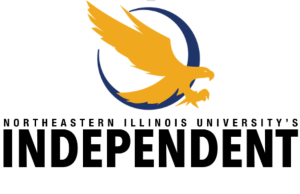Loan Forgiveness Would Benefit 64 Percent of NEIU Students
November 1, 2022
Nearly two-thirds of current students at NEIU qualify for federal loan forgiveness according to data provided by Maureen Amos, Executive Director of Financial Aid and Scholarships & Student Employment at NEIU, and analyzed by the staff at The Independent. The Biden Administration announced the new program in coordination with the U.S. Department of Education on August 24, 2022. The department’s website explains a three-point plan to fulfill President Biden’s student loan debt relief initiative.
Part 1: Final extension of the student loan repayment pause
Extends the student loan repayment pause that the federal government instituted due to the challenges students and their families face due to the COVID-19 pandemic.
To help prevent any defaults and to ease the transition process the Biden Administration has extended loan repayments pause until Dec. 31, 2022. Borrowers restart payments in January 2023 unless they are continuing students and their loans are deferred until six months after graduation.
Part 2: Providing targeted debt relief to low- and middle-income families
Low and middle-income individuals with incomes under $125,000 or households under $250,000 can have up to $20,000 forgiven, depending on the type of grant received. $20,000 will be forgiven for Pell Grant recipients.
According to information in the University Database provided by Amos, 2,596 (45% of current students) are Pell Grant recipients.
Non-Pell Grant recipients qualify for only $10,000 of loan forgiveness which is 1,096 (19% of current students). To qualify for forgiveness the loan must have been disbursed before July 1, 2022.
For those that have not provided the department with their income, the Administration has launched a website with an application: https://studentaid.gov/debt-relief/application.
Applications can be submitted online but they are not currently being reviewed or processed due to litigation from six republican led states claiming the loan forgiveness program will cost them millions and is unconstitutional. White House Press Secretary Karine Jean-Pierre, stated that the litigation may only be a temporary setback for the program.
Part 3: Make the student loan system more manageable for current and future borrowers
The Biden Administration proposes a new income-driven repayment plan for lower and middle-income individuals and families. Under this proposal:
- Borrowers would pay no greater than 5% of their discretionary income monthly on undergraduate loans.
- Guarantee that no individual or family earning under 225% of the federal poverty level will be required to make a monthly loan payment.
- For loan balances less than $12,000, offer forgiveness after 10 years instead of the current 20 years requirement.
- Reducing unpaid interest on loans as long monthly loan payments are made.
Unfortunately, some states may tax loan forgiveness. These include Arkansas, California, Indiana, Mississippi, Minnesota, North Carolina, and Wisconsin with 392 students attending NEIU living in these states and may be required to pay state income tax if their student loan is forgiven.
Tax rates and brackets vary by state. For example, students residing in Indiana will need to pay $323 in state income tax for each $10,000 increment that is forgiven.
We will continue to report on the latest developments regarding the Biden Administration’s signature program to help students finance their higher education.
Source: https://www.flickr.com/photos/30478819@N08/50049718103
Marco Verch Professional Photographer







